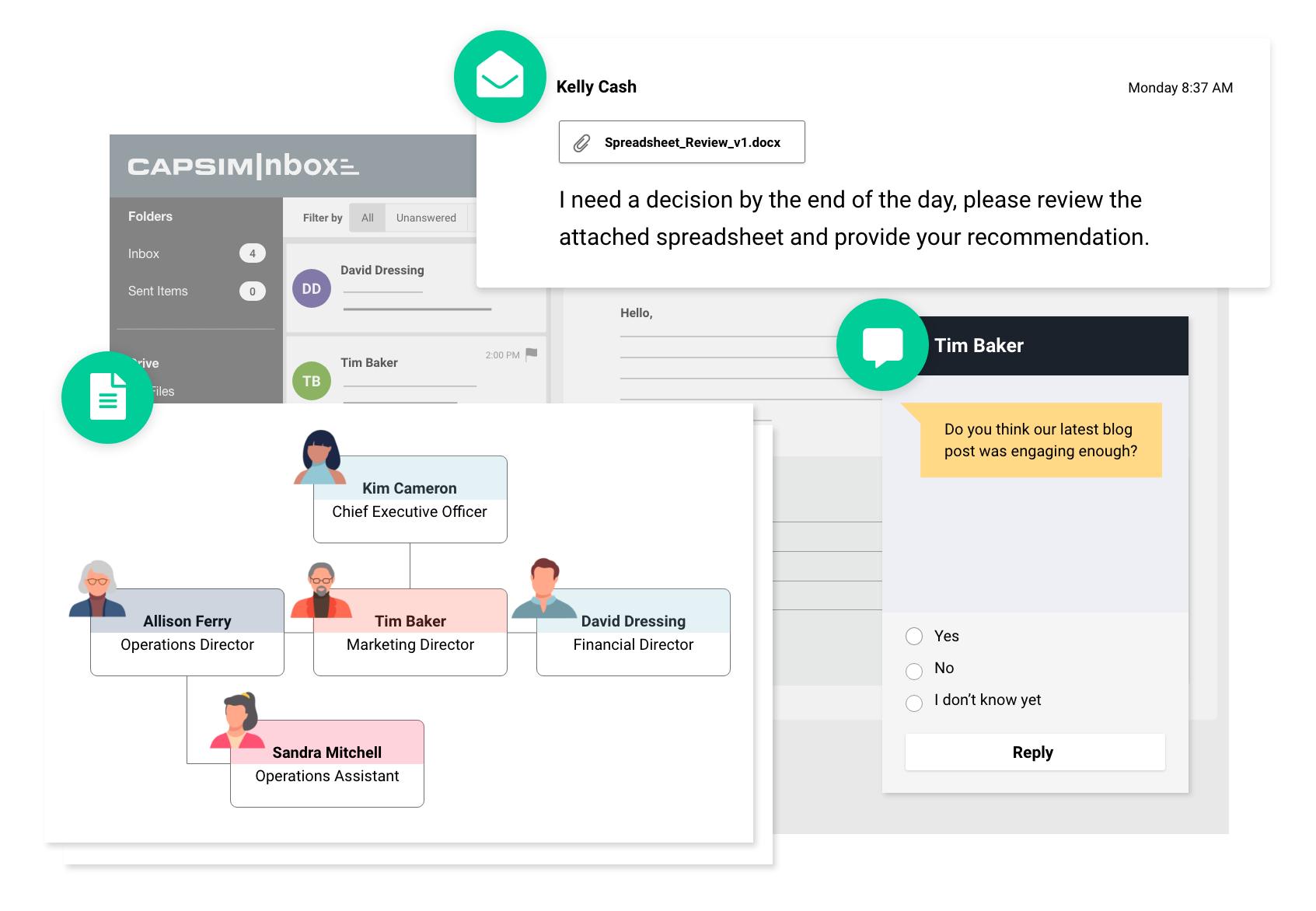Filling the Gaps: The 5 Top Soft Skills Employers Want Right Now
January 19, 2022
.jpg)
What is one of the most important elements of any successful workplace? According to 88 percent of surveyed employees, the answer is company culture.
When we think about company culture, we might think of frivolous things like free coffee in the break room or Google’s infamous nap pods. However, the secret to building a great company culture is actually a lot simpler: It revolves around developing and nurturing the right soft skills in our employees.
Assessing and developing the right soft skills in your employees is critical because, while various hard skills may come and go with time, your team will always need to collaborate and build interpersonal relationships to succeed.
This article will discuss the five soft skills employers are looking for in the current climate to produce a positive and productive working environment. Armed with this information, you will know which soft skills are vital to develop in your employees. You can also change how you hire by assessing these skills in your job candidates.
What Soft Skills do Employers Want?
When searching for the perfect candidate for a position, the first pieces of the puzzle that come to mind are the hard skills needed for the position in question. “Job requirements” in job postings are filled with various credentials, software experience, and desired years in the industry or a similar position. However, employers are looking for more than just a walking resume; 84 percent of HR managers are willing to hire an under-qualified employee who is otherwise a good fit.
But what makes them a good fit? Soft skills.
Soft skills will enable you to make people your competitive advantage in the marketplace. There might be hundreds of candidates with the same credentials you’re looking for, but without the right soft skills, they still may not be an asset to your organization. Fostering and encouraging the development of these five soft skills will help you create a company culture that will have top talent lining up at the door.
RELATED READING: 5 Reasons Why You Should Spend More Time Developing Soft Skills
Communication
What It Means
Communication is often associated with public speaking and customer service, but in reality, this soft skill has a lot more applications than that. Communication skills refer to all the ways you interact with others. This includes both written and verbal interactions with customers, leadership, and fellow employees at your organization.
An employee who is skilled in communication can collaborate with others, contribute ideas in larger discussions, and listen to the thoughts of others in the organization.
Why Employers Want It
Employers looking for customer service agents are, of course, looking for strong communicators to effectively and gracefully manage customer issues. Employees who are not in customer-facing roles are not exempt from quality communication skills. Across roles, communication skills also help employees set expectations and express concerns appropriately with customers, colleagues, and leadership to achieve positive outcomes.
Employers are looking for team players, and communication skills are key to fostering collaboration and building a strong team. A capable employee needs to effectively contribute to conversations without steamrolling their colleagues. They need to be skilled in the speaking and listening aspects of communication.
Creative Problem-Solving
What It Means
Creative problem-solving refers to your ability to look at a problem from multiple angles, devise and evaluate possible solutions, and implement the best option to solve the problem at hand.
This skill incorporates both an employee’s ability to look at a problem creatively and their tendency to see the solution through to the end. Creative problem-solving is more than just putting out fires as they pop up. It requires the employee to innovate and develop a solution that will prevent future fires from being lit.
For example, a data specialist may notice an error in a data set. Simple problem-solving would involve correcting the data error and moving on. Creative problem-solving takes this solution a step further, inspiring the employee to conduct an audit of similar data to catch any other errors in the data set proactively.
Why Employers Want It
If you were to ask hiring managers what personality trait they find essential in their employees, many of them would likely say that they require their employees to be self-starters. In today’s busy world, managers do not have the time to micromanage their staff, so they are looking for workers who are ready and able to take the initiative concerning their job duties.
Without creative problem-solving skills, employees will struggle to complete unfamiliar tasks or deal with unexpected challenges without help. In short, an employee who is not skilled in creative problem-solving will require more hands-on management than an employee high in this particular soft skill.
Ability to See the Big Picture
What It Means
An ability to see the big picture or “fly at 10,000 feet” is a skill generally associated with leadership, but in truth, it’s a vital skill for employees at all levels of your organization.
The ability to see the big picture allows an employee to see how their role and job duties fit into the goals and objectives of the organization as a whole. We can illustrate the importance of this skill with an example:
Consider an employee who is responsible for marking customer data in the system. If they see only their job duties, they may not sweat it if they enter a piece of data incorrectly or forget to log it altogether. However, suppose that employee understands that the data they enter is used for high-level reporting regarding the success of their new initiative. In that case, they will better understand the importance of getting that data right.
Why Employers Want It
Employee self-sufficiency is essential to many hiring managers. An ability to see the big picture assists employees with decision-making, prioritization, and task management. In short, understanding what is influenced by their work helps an employee understand which tasks are most important for the success of others in the organization.
Seeing the big picture also contributes to an employee’s collaboration skills. Seeing how their processes influence other teams helps employees work more effectively with other teams and individuals. Additionally, understanding where their role fits into the organization’s goals can increase employees' feeling of value and connection to their company.
Adaptability
What It Means
At its core, adaptability refers to an employee’s ability to take on new challenges, learn new skills, and change their processes in response to a change in their environment. In other words, when the company switches computer systems, how quickly can employees shift their daily processes to accommodate that change?
Adaptability also encompasses an employee’s attitude when it comes to change. Does the employee approach change as an opportunity, or do they view it as an inconvenience? The mindset with which an employee approaches a change can determine how well they adapt.
Why Employers Want It
What do business, technology, and customer interactions have in common? They can be hard to predict. Change is inevitable for employees across roles and industries. An employee who struggles to adapt to that change can be underproductive at best and toxic to their colleagues at worst.
Technological solutions sunset and systems change, but sometimes environmental changes are even more drastic than a tech upgrade. Larger societal shifts can impact business processes.
For example, when the COVID-19 pandemic hit in the spring of 2020, businesses all over the globe were forced to shift to remote work and make other changes to keep customers and workers safe in the new environment. Employee adaptability was key to ensuring that business operations remained active amid the uncertainty.
In the aftermath of the pandemic, we predict that adaptability will only rise on employers’ list of desired soft skills.
Patience
What It Means
When we think of patience, we often think of the ability to wait for something, but the soft skill of patience encompasses much more than that.
Patience involves an employee’s self-control abilities - can they resist the urge to react emotionally, waiting until their emotions are regulated before taking action? It also refers to the ability to see things through another’s perspective.
For example, during a group project, a patient employee will see their colleague is already overstretched and understand that the tasks they’re waiting for will either need to be reassigned, or they’ll need to wait. An impatient employee may grow frustrated with their colleague and badger them to submit their part of the project at hand.
Patience can also assist with decision-making and problem-solving. A patient employee will be able to take a step back and assess a situation before acting, whereas an impatient employee may be motivated to make a rash decision.
Why Employers Want It
Employers are looking for employees skilled in patience because they are more likely to be thoughtful in their decision-making. Patient employees are also more likely to be flexible with colleagues and changing circumstances.
It’s important to understand the difference between patience and complacency. We may be tempted to think that an employee putting up with an inefficient process is being patient. In reality, that employee is just demonstrating complacency. A patient employee can still strive to improve processes and drive company growth. They will just do it in a measured and deliberate manner.
Do Your Employees Have These Soft Skills?
These five soft skills are vital to building a collaborative and productive work environment regardless of industry. Without these skills, your workforce cannot collaborate effectively, solve problems efficiently, or weather periods of change or innovation as they arise. The good news is that, like all skills, soft skills are teachable.
CapsimInbox offers authentic, validated simulations that give employees the chance to react to real-world situations in a controlled environment. The results of these simulations can identify areas of improvement, allowing staff and their managers to assess progress and continue training the skills in which they need the most work.
Get started with our self-guided demo to see how an inbox simulation can assess and strengthen the soft skills you and your team need to succeed.





.png?width=80&name=1-questions%20(1).png)